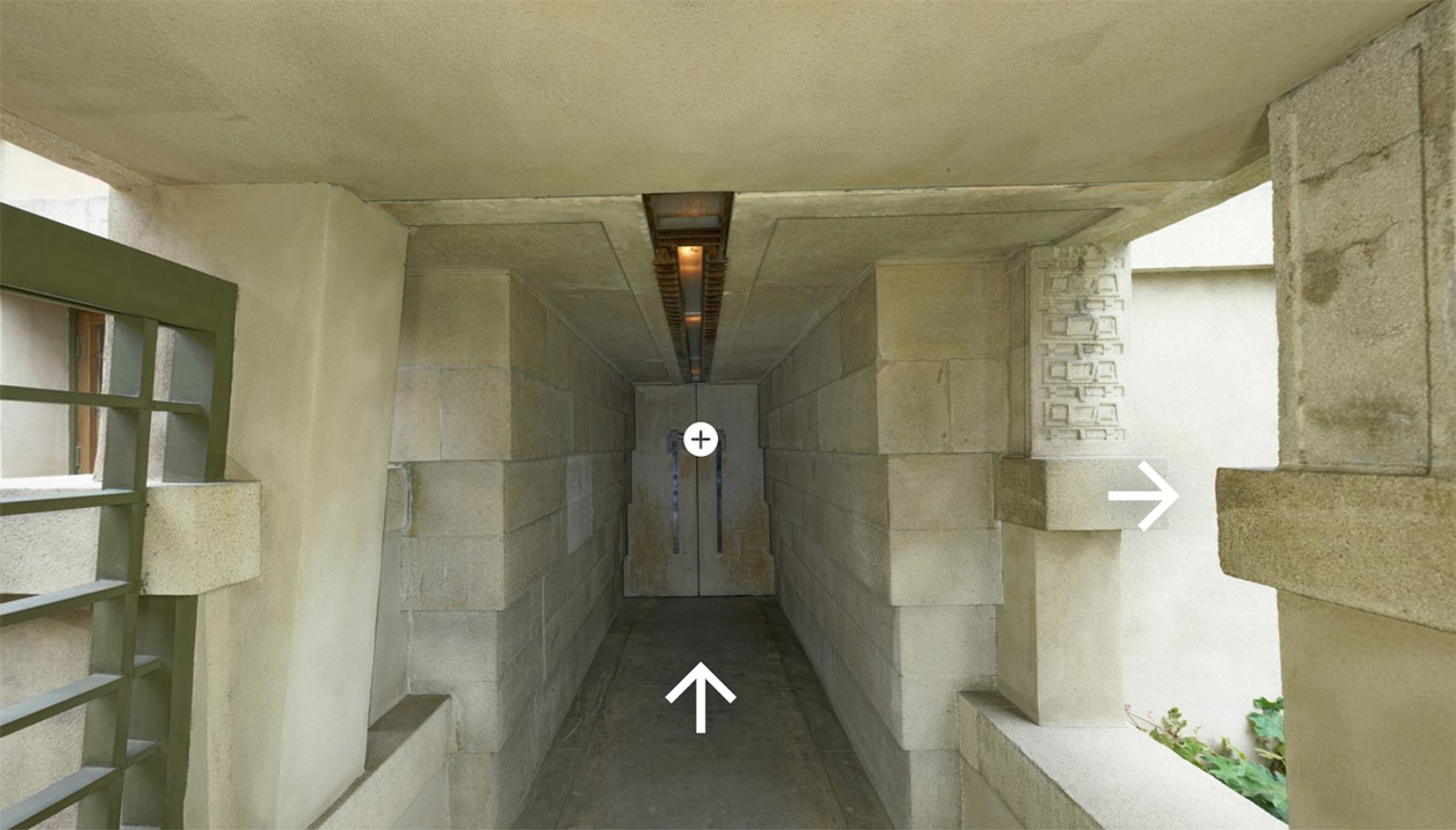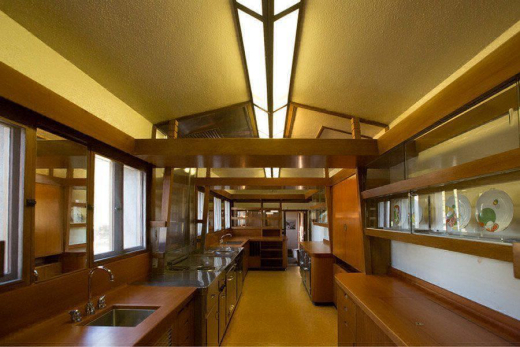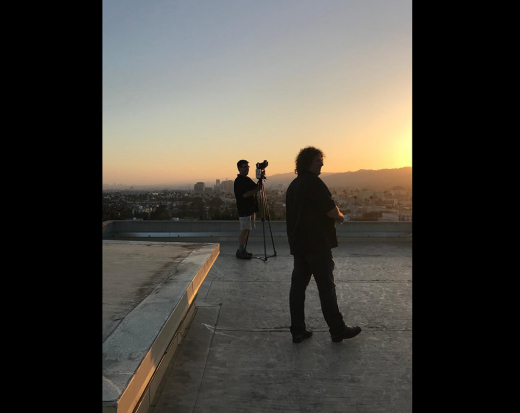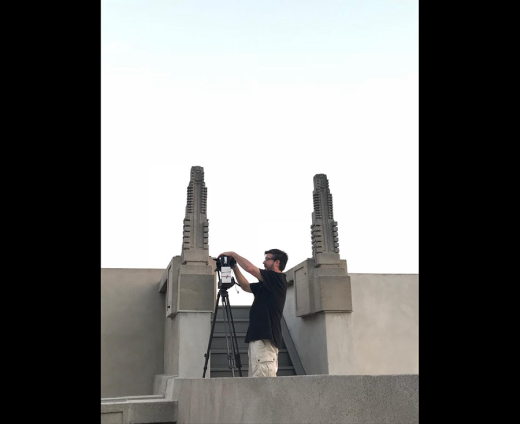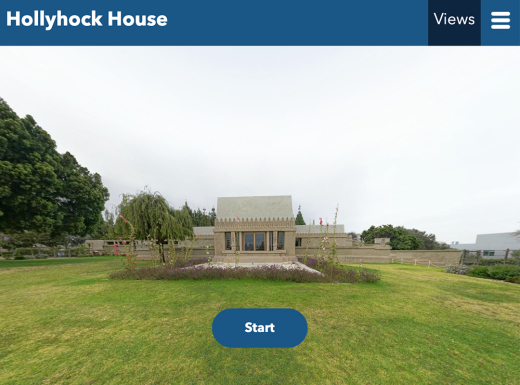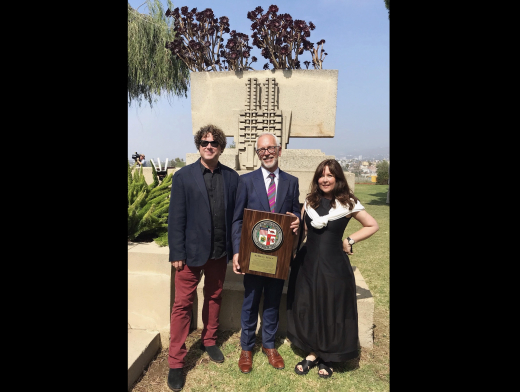Frank Lloyd Wright’s Hollyhock House, one of eight Wright sites inscribed on the UNESCO World Heritage list in 2019, recently implemented a new Virtual Accessibility Experience (VAE) created by AVA Inclusivity. The Los Angeles-based company, founded in 2017 by Astrid Reed and Gregg Leonard, worked with members of the City of Los Angeles’ Department of Cultural Affairs and Department on Disability to meet the City’s standards and needs. They also collaborated with experts and consultants from the disability community and worked closely with disability organizations, to ensure that the user interface was accessible and provided an experience of inclusion for all visitors to Hollyhock House.
There are a broad range of challenges visitors with disabilities can face upon entering a heritage site. As is the case with so many historic house museums, including Hollyhock House, once visitors who use wheelchairs enter the property, stairs and narrow doorways present challenges and limit how much of the house can be experienced physically. Many stewards of historically significant sites may not be aware that the most commonly used “real estate-style” 360 tours utilize an interface that does not allow for assistive functionality. Because of this, these “virtual tours” do not function to serve a large majority of people with disabilities. AVA Inclusivity utilizes unique and innovative technology combined with deep insights into the needs of both curators and people with disabilities to provide a truly inclusive visitor experience. The project's use of the highest resolution image capture far exceeds standard virtual tours and the quality of the photography honors the aesthetic integrity of heritage architecture. Virtual tours that are designed to serve people of all abilities position historic house museums to attract more visitors and generate more revenue.
Creating a Virtual Accessibility Experience at Frank Lloyd Wright's Hollyhock House
Author
Astrid Reed
Affiliation
AVA Inclusivity, Inc.
Tags
The delivery system and accessibility features go beyond the current Web Content Accessibility Guidelines (WCAG) and provides options for users who are deaf, hard of hearing, blind or partially sighted in addition to serving people who have physical disabilities, use wheelchairs or who have difficulty managing stairs. The tour can be accessed easily on a person's own smartphone, tablet or computer. This is an important aspect for many disabled people as their personal devices may already be customized with assistive features for their specific needs. AVA Inclusivity’s virtual tours are designed to be used on site with the inclusive interaction of a docent or educator but they can also be used off site with a WiFi or LTE connection. No matter how tech-savvy the user, the icons and navigation are intuitive and the tours also features audio narration and text options. To complement the technology, a custom training presentation and reference material are provided for staff and volunteers to better understand the features of the tour and to help ensure that people with disabilities truly feel welcome at historic sites.
Since this program has been implemented at Hollyhock House, the quality of the visitor experience for people with disabilities has changed dramatically. For example, a wheelchair user visiting Hollyhock House with a non-disabled companion will be greeted at the door by a house manager who will inform them of the VAE option. If that person’s companion decides to go up the stairs to the upper floor, a docent can step in and ask the person if they would also like to see the rooms on the upper floor. With the VAE they are able to experience the same upper floor rooms their companion is seeing, either by using their own device or with one belonging to the site. Users can explore each room and zoom in to examine stained glass, woodgrain and textile fibers in exceptionally clear, high resolution detail. They are able to continue discussing with a docent what they are looking at and ask questions, in a way that is both accessible, inclusive and commensurate to the experience of their companion.
When historic house museums and cultural sites provide enhanced accessibility options for persons with disabilities, it is ultimately a benefit for everyone. An inclusive approach to engagement with visitors often leads to positive word of mouth and social media reviews and recommendations. Individuals who might not consider visiting a property due to lack of accessibility will now be excited to visit and bring along a spouse, friend, or family members, which drives up total visitation. Since stay-at-home orders have become widespread during COVID-19, an unexpected benefit of the recent accessibility effort became clear: the Virtual Accessibility Experience now serves to provide access to Hollyhock House for all while the physical site is closed. Cultural sites and historic house museums are reliant on visitors, not only for daily operations, but also to rally interest in their communities for ongoing-preservation, conservation and education. During these times of shutdowns, historic sites must work to ensure that they stay in the hearts and minds of people. The VAE created for Hollyhock House provides a way for people to explore a Frank Lloyd Wright masterpiece and learn more about its storied history, architectural details and unique points of interest. At the same time it reminds people of a place they love until the doors open for visitors again.
In the future, when this crisis has waned, the nature of travel, tourism and visitation to historic sites will be changed. How long will it be before people are comfortable enough to visit these sites again? Virtual experiences will be an important asset for historic sites, not only for visitors on site or the public at home, but also to engage current members, donors, historians, and scholars, many of whom are themselves included in the large demographic of people with disabilities. In the near term, it is vital for cultural institutions to keep this engagement at the top of their minds and keep the virtual doors to world heritage open for all people of all abilities.
About the Author
Originally from Australia, AVA Inclusivity’s President and co-founder Astrid Reed has 20+ years of international experience as a curator and museum educator, with significant expertise in the fields of architectural history, heritage preservation and house museums. She also spent three, wonderful years as a Hollyhock House docent.
Lear more about AVA Inclusivity.
